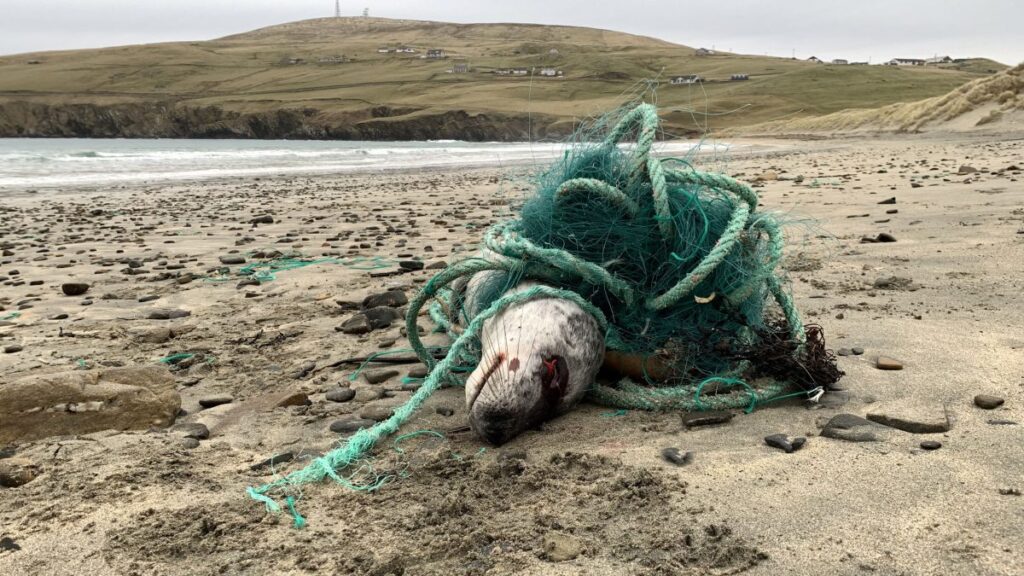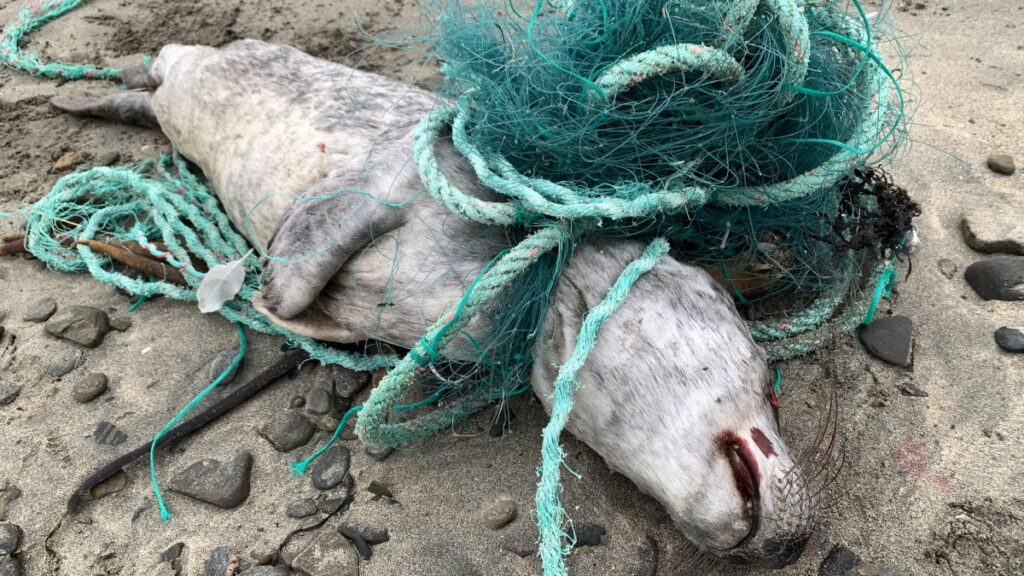A “SPECIAL” grey seal who adopted an orphaned pup after her own newborn was lost in a storm has died.
Marine researchers were amazed by Tulip’s maternal instinct to nurse and wean another pup following her own loss in 2002.
The 27-year-old mammal swam to a nearby island in Skomer, Pembrokeshire, where she found the lone seal pup and helped it to survive.

Tulip was last spotted looking fit and healthy in January this year but was found washed up on a Cornish beach two weeks ago.
Researchers from the Cornwall Seal Group Research Trust have since paid tribute to Tulip who have described her as “amazing, special” and an “amazing mummy”.
Speaking today, Sue Sayer, Director of the Seal Research Trust, said: “For me there is no such thing as an average seal – like humans each individual seal has its own personal life story of experiences.
“It was wonderful that Tulip taught us about the behavioural capacity of an adult female.
“Having lost her own pup, she had the instinct to nurse and wean another pup in need after it too became separated from its mum.
“Whilst we are always sad to see a seal die, we aim to do the one remaining thing we can do is record its existence through its demise and share its incredible personal life history to help inform our understanding of the species as a whole.
“Incredibly our last live sighting of Tulip was towards the end of January when she looked fit and healthy.
“We will never know the cause of her death without funding for seal postmortems.
“We can only assume that whatever it was, it did not last long, although wild animals rarely show indications of pain or illness.
“At least our pioneering citizen science photo ID work has meant that Tulip’s death was photographed, enabling closure of her record.
“She was likely nearly 30 years old, which is the average life expectancy for a female grey seal and we celebrate the contribution she has made to informing our knowledge of grey seal behavioural science.
“RIP Tulip, I will sadly miss you, and your uniquely identifiable fur pattern which are etched in my memory forever, a little like an old friend, albeit a seal.”

The organisation also posted about Tulip’s life and death on Facebook on Friday, writing: “Meet Tulip. She is a very special seal to us at SRT.
“Sadly, we had some bad news about Tulip two weeks ago, she was found dead on one of our beautiful Cornish beaches.?
“We first met Tulip in 2002, and we estimated that she was aged around 27 years old.?
“Tulip did something amazing, which we didn’t know female seals did.
“Having lost her pup in a storm on a nearby island, she swam into Skomer for the first time and adopted a pup that had also lost its mum and successfully weaned it.
“Isn’t she an amazing mummy seal!
“The best thing we can do for all dead stranded animals on our beaches is record their life through their death and tell their stories and celebrate their lives.
“We can also learn from their decaying carcasses about the natural scavenging and decomposition process.
“RIP Tulip.”
The post has received almost 200 comments and comments from animal lovers.
Sally Maunder said: “She was very beautiful.
“RIP Tulip and swim free over the rainbow bridge.”
Claire Richards said: “What a wonderful girl and mum she was.”
And Rebecca Ruth said: “What an amazing story.”
Seals have a maximum lifespan of around 25 to 30 years, while males have a much lesser lifespan.
21% of pups die within the first year, which compared to other animals in the wild is uncommonly low.
Grey seals in the UK make up two thirds of the world’s population and most live in Scotland, Cornwall and the Scilly Isles.

